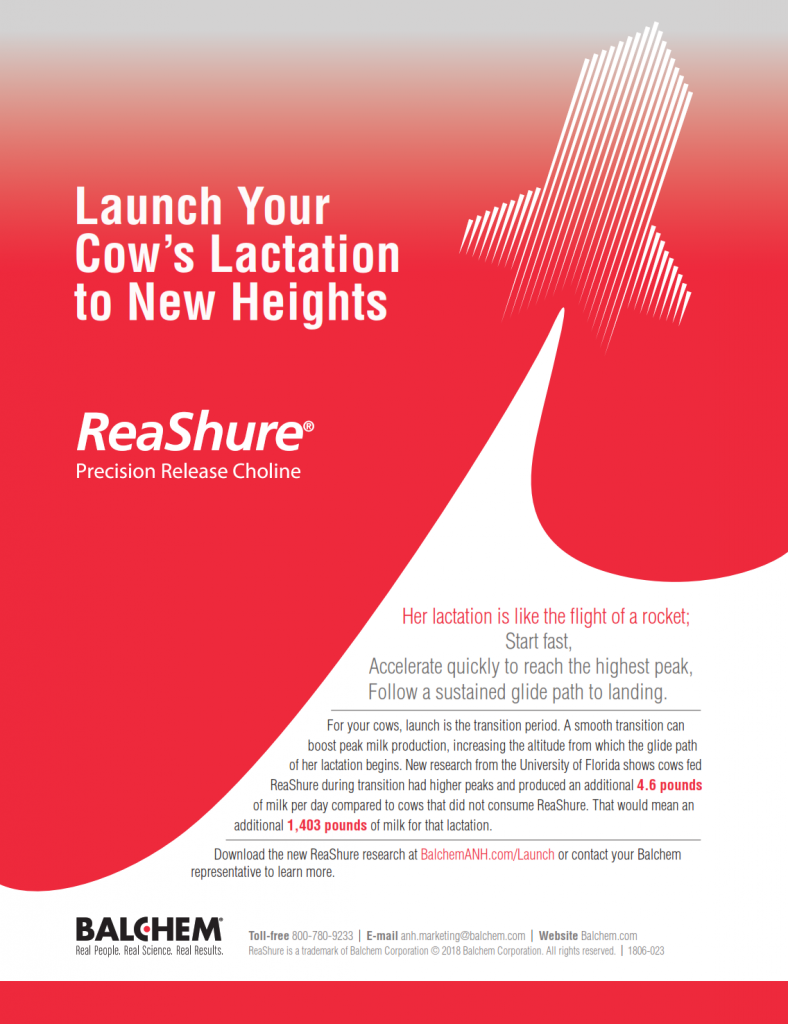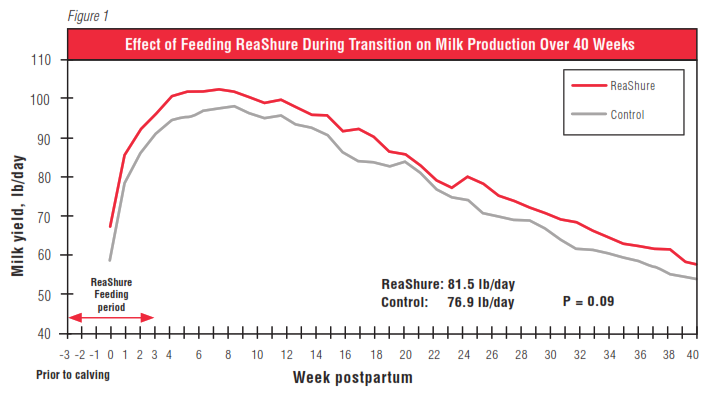Choline’s Role in a Successful Transition
RESEARCH STUDIES COMPLETED IN BOTH HUMAN AND ANIMAL NUTRITION HAVE IDENTIFIED CHOLINE AS AN ESSENTIAL NUTRIENT
Choline is part of the process that helps metabolize and move fat out of the liver and convert feed into energy. This is the first in a series of articles highlighting the importance of rumen protected choline in the health and productivity of dairy animals.
For your cows, transition is the most important 6 weeks of her lactation. The three weeks before calving and three weeks after calving set the trajectory for the entire lactation. A smooth, trouble-free transition can boost peak milk production, increasing the altitude from which the trajectory of her lactation begins. Higher peaks mean increased milk production over the entire lactation. With very few ways to positively impact the lactation curve after she reaches peak, sound investments made during this short 42-day transition period will reap rewards throughout the entire lactation.
Choline is a required nutrient that enables cows to utilize the fat (NEFA) mobilized from body stores. Production of NEFA is the cows’ natural way of managing negative energy balance during the early stages of lactation and is a primary source of energy for many functions. Issues occur when the cow’s liver cannot effectively process all the NEFA that are mobilized. This leads to increased ketones in the blood (ketosis) which can negatively impact feed intake and further exacerbate negative energy balance, leading to even more NEFA mobilization.
New research from the University of Florida* evaluated the impact of feeding ReaShure Precision Release Choline to cows during the transition period on milk production over the entire lactation. The study also tracked cow health, reproduction, calf performance and colostrum quality.
Treatments were dry cow diets that were formulated for either maintenance energy (0.64 Mcal NEL/lb) or high energy (0.74 Mcal NEL/lb) and then either with or without 60 grams of ReaShure for approximately 21 days prepartum through 21 days postpartum. After calving all cows received the same lactation diet.
INCREASED MILK AND COMPONENTS
OVER THE 40-WEEK LACTATION
Cows fed ReaShure during the transition period produced an average of 4.6 lbs more milk per day (P = 0.09) over the first 40-weeks postpartum (Figure 1). If we extrapolate these results over a 305-day lactation, the outcome would be an additional 1,403 lbs of milk per cow per year. Percent fat and protein were not impacted, but both fat, 3.43 vs. 3.61 lbs/day (P = 0.09) and protein, 2.66 vs. 2.79 lbs/day (P = 0.07) yield increased for those cows receiving ReaShure. It was also noted that cows with good body condition (BCS = 3.5) produced on average 6.0 lbs more milk per day (P = 0.09) when fed ReaShure. This simply shows that cows of normal body condition respond quite well to ReaShure.
SUMMARY
The success or failure of an entire lactation is often determined during the 42-day transition period. Helping cows effectively manage transition will improve the amount of peak milk attained, which in turn will set the trajectory of the remaining lactation curve. Include ReaShure Precision Release Choline in your transition cow rations to help fuel a successful launch, higher peak and elevated glide path for her lactation.
*Zenobi et al, J. Dairy Sci 101:1089-1110.


